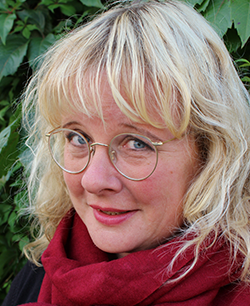Referens: Forskning om undervisning och lärande, vol 9, nr 3, s. 28-47
Författare:
Anna Lyngfelt,
Eva Söderberg
Publiceringsdatum: 2021-12-16
Genom narratologisk analys utforskas didaktiska möjligheter att utveckla kunskap om relationen mellan ekologisk, ekonomisk och socialt hållbar utveckling. Två bilderböcker utgör utgångspunkt för analysen: Naturen (2020), av Emma AdBåge, och Mitt bottenliv – av en ensam axolotl (2020), av Linda Bondestam. Forskningsfrågan lyder: Hur kan analys av begreppet röst vara didaktiskt användbart för att bilderböckernas läsare ska kunna positionera sig själva i relation till böckernas innehåll och det omgivande samhället? De bilderböcker som används rymmer en stor tolkningspotential. Detta visar sig genom bilduppslagens rikedom av representationer i form av exempel hämtade från vår ”civilisation”. Dessa möjliggör prövande, tänkbara positioneringar för böckernas läsare. Genom att lyfta fram möjligheter med den narratologiska analysen visar vi vad klassrumsarbete skulle kunna innebära, med utgångspunkt i UNESCO:s Education for Sustainable Development Goals. Learning Objectives (www.en.unesco.org).
av
Anna Lyngfelt & Eva Söderberg
Nyckelord: bilderbok, ekologisk hållbarhet, ekonomisk hållbarhet, litteraturdidaktik, narratologi, social hållbarhet
Making your voice heard. A didactically oriented analysis of the picture books Naturen and Mitt bottenliv – av en ensam axolotl
Abstract
The purpose of this article is to explore didactic possibilities for developing knowledge about the relationship between ecological, economic and social sustainable development based on narratological analysis of Swedish picture books. For this purpose, the picture books Naturen (2020), by Emma AdBåge, and Mitt bottenliv – av en ensam axolotl (2020), by Linda Bondestam are used. The research question is: How can the narratological concept of voice be didactically useful for the readers of the picture books to be able to position themselves in relation to the content of the books and the surrounding society? The analyses of the books show that it is impossible to distinguish ecological conditions from economic and social circumstances, and that becoming a subject does not necessarily lead to emancipation. In connection with this, the analyses show that the voices of the books - if seen as part of a public discourse where teaching is included - can be twisted together and develop into a communal voice through the voices of students. It is through the process of positioning, by making use of the interpretive potential of the picture books, that the possibilities for developing knowledge about the relationship between ecological, economic and social sustainability are to be found.
Keywords: Ecological sustainability, Economic sustainability, Social sustainability, Picture books, Narratology, Didactics
Corresponding author: Anna Lyngfelt / anna.lyngfelt@gu.se

